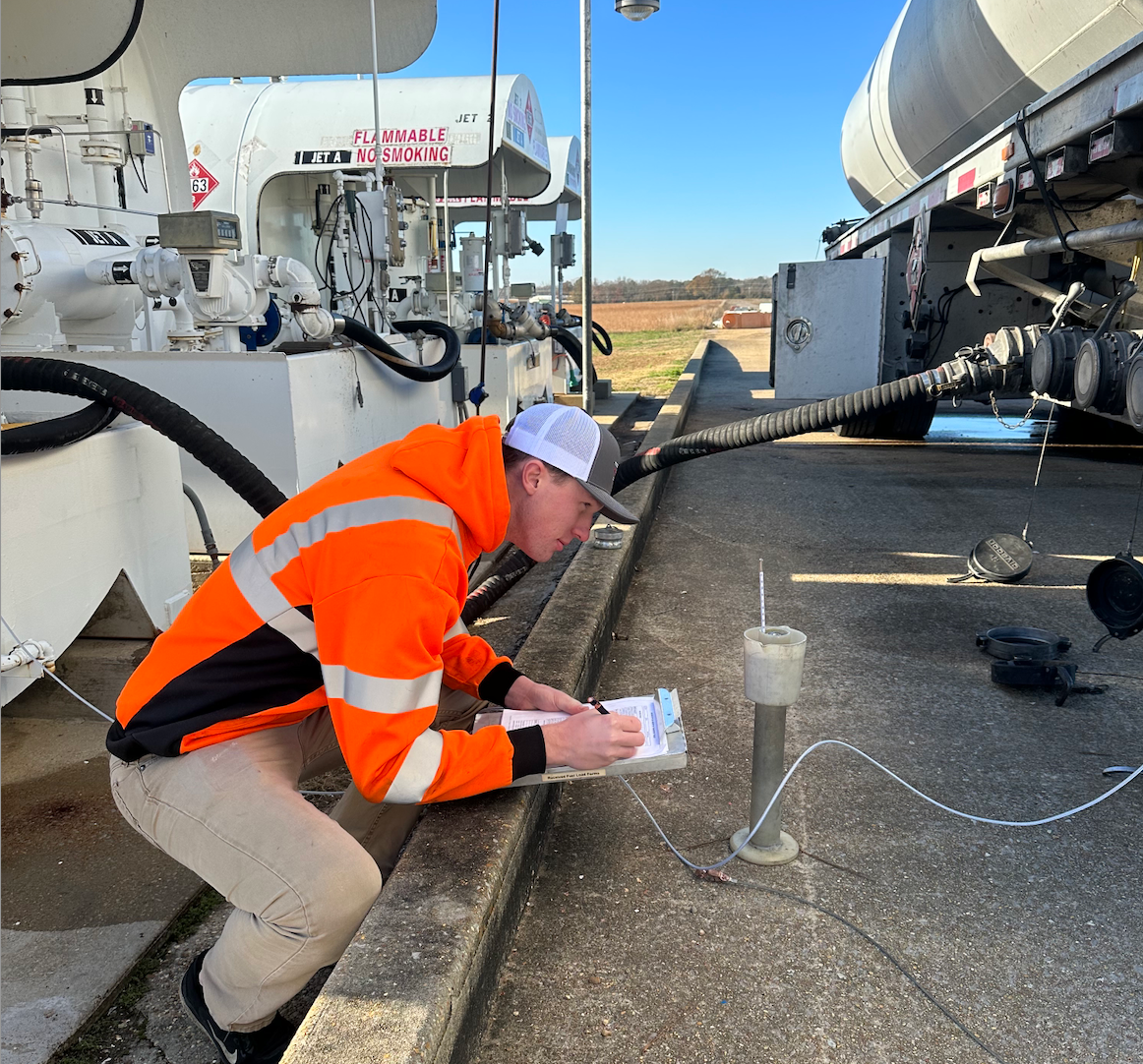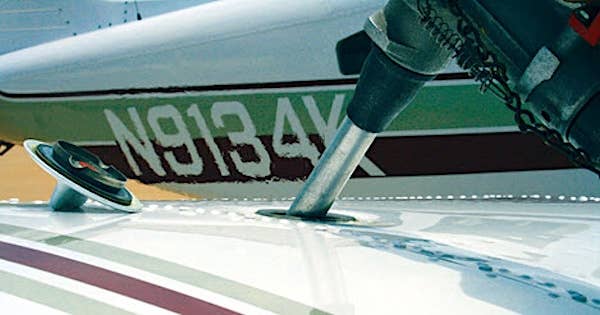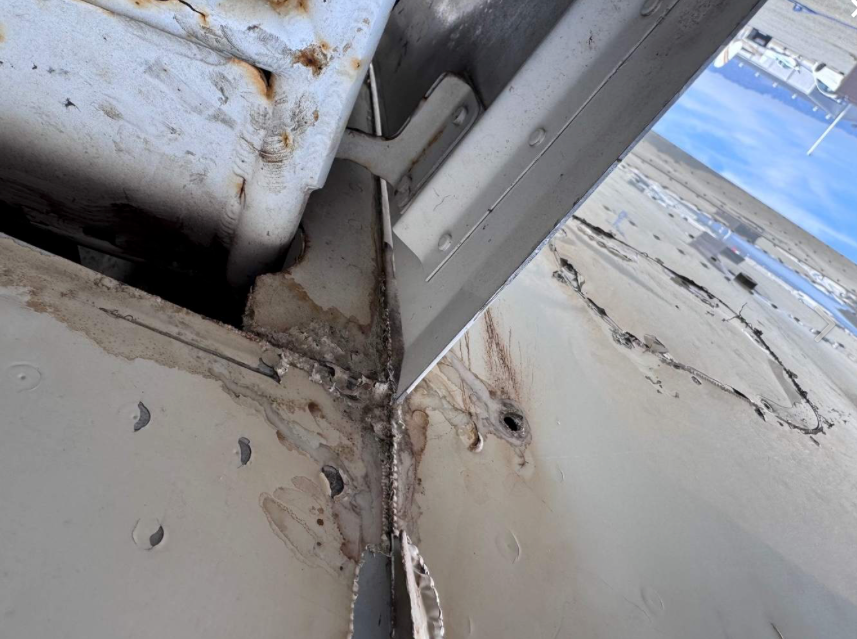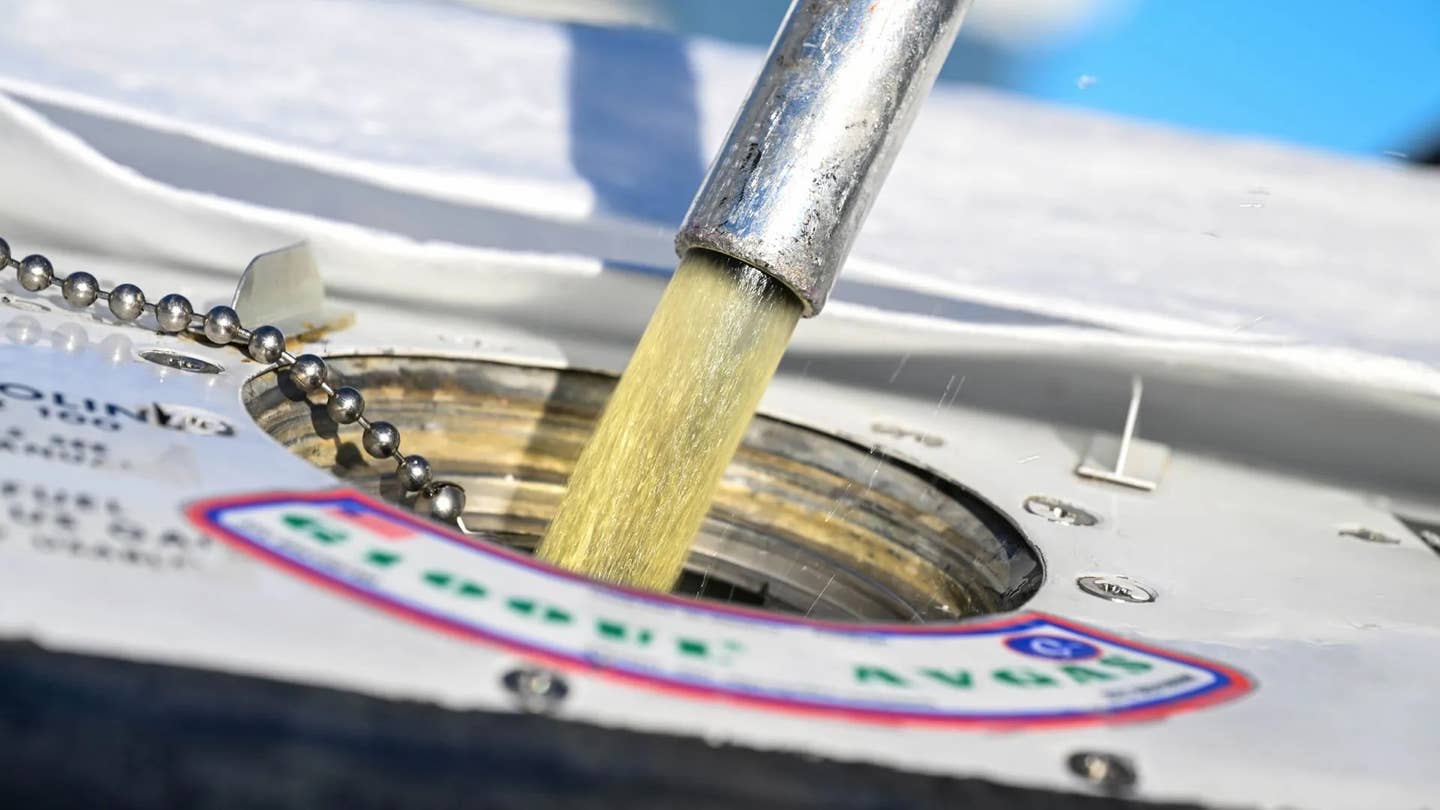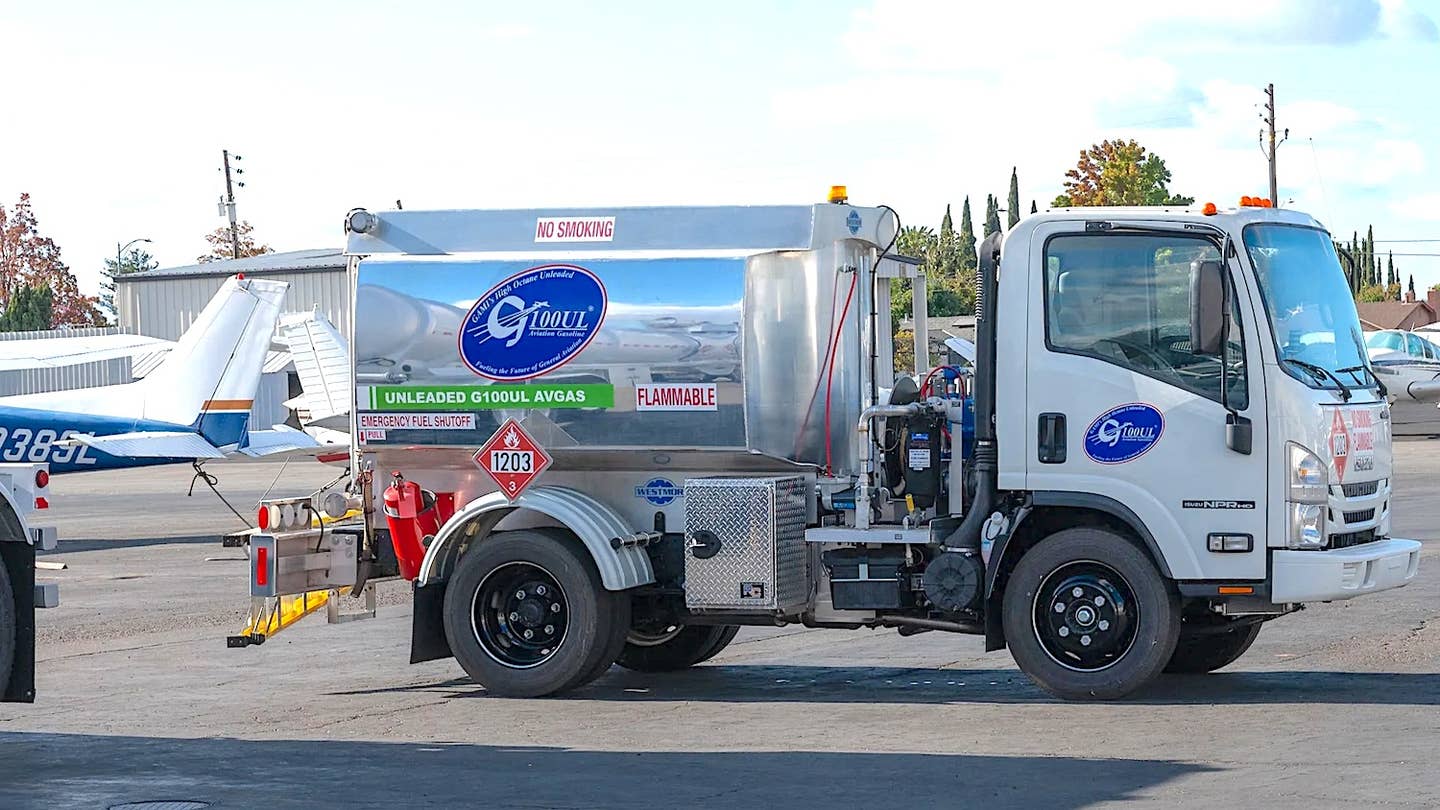Corrosion Control
Some parts of the country are much worse than others, but we all have to know about corrosion.
The basic definition of corrosion is the electrochemical deterioration of metal due to chemical reaction to the surrounding environment. The by-products are powder-like and may be colored from light gray to white to red to black, depending on the metals involved.Corrosion, left unchecked, goes from unattractive to destructive, sometimes alarmingly fast depending on the metal and the environment. Corrosion can greatly compromise the strength and integrity of the aircraft structure. If left unattended for an extended period of time, it will have the same effect on your bank account.Most modern aircraft are made of several different lightweight metals that have an undesirable trait of a high electrode potential. This means that they are very reactive to any contaminants in the air.Aircraft that operate in industrial areas, coastal regions or a very humid climate are especially susceptible to the effects of corrosion. Even Alclad aluminum, which is relatively safe from simple atmospheric attack, is vulnerable in these hostile conditions.
350
There are four basic requirements for corrosion to form: 1. There must be the presence of a metal that will corrode (anode). 2. A dissimilar conductive material that has less tendency to corrode must be present (cathode). 3. Some form of electrolyte (e.g. water) must be present. 4. Electrical contact between the anode and cathode must be present such as metal-to-metal contact of a fastener.If we remove any one of these basic requirements, corrosion can be controlled. Very small environmental changes can have a dramatic effect on the speed of corrosion.Different metals and different alloys of metal will corrode at different rates. All metals can be arranged on an Electro-Chemical Series (see table at right). The higher the metal is on the table, the more prone it is to corrode. Interestingly, metals and alloys that are most used in aircraft construction comprise the top half of the table. This is the penalty for light weight and strength at affordable prices.Corrosion can take many forms, most of which are thought of as gradual processes. Multiple forms can be at work at the same time. Examples are surface-etch corrosion, pitting, and exfoliation, which we will describe later on. However, there are also forms of corrosion that can occur more rapidly, such as stress corrosion cracking, environmental hydrogen embrittlement, and fatigue corrosion. These latter forms are influenced by both chemical and mechanical aspects of the environment, and can cause catastrophic structural failures without a great deal of warning.
Oxidation
350
One of the most common gradual types of corrosion you will encounter is atmospheric corrosion, sometimes called oxidation. Whenever a metal is exposed to any gas that contains oxygen atoms along with atmospheric moisture, a reaction occurs. Two atoms from the metal join with three atoms of oxygen to form an oxide. How serious is this type of corrosion? It depends on what type of metal is involved. When an aluminum surface is involved, the corrosion by-product is aluminum oxide.Once the layer of aluminum oxide film is formed, it provides an easily penetrated barrier between the aluminum surface and oxygen elements. Further deterioration can continue under the oxide layer, but at a reduced rate. Unfortunately, the surface oxidation may mask a serious level of corrosion going on below. A number of different aluminum alloys are used on a typical plane, and they have differing susceptibilities to corrosion. Never trust an oxide film to protect aircraft components from further deterioration.There is a form of oxide film that forms very tightly bound to the surface of some metals. It creates what is called a passive film. Stainless steel and titanium are also examples of such metals. Once formed, further deterioration is stopped unless the film is broken. Unfortunately the film is all too flimsy to provide useful self-limiting.Pure aluminum is very resistant to corrosion but not strong enough to be used in any structural capacity. It is used on sheet metal as a very thin coating called cladding, but it is easily broken through to the less corrosion-resistant structural component of the sheet without extra care. Careless use of a machine buffer can even go through cladding, as can minor scratches.When an iron surface is involved, the corrosion by-product is iron oxide, which we all know as rust. Rust never sleeps, and the iron oxide forms a porous film that cannot seal out the oxygen. The reaction between the surface and the oxygen will continue until the metal is completely eaten away.
Surface Etch
350
General surface-etch corrosion is a very common type of corrosion encountered in the aviation field. This occurs when an unprotected metal surface is exposed to a corrosive atmosphere such as exhaust fumes, salt air, industrial contaminants, or acidic fumes (like those found in your aircraft's battery box). The exposed surface takes on a uniform, dull appearance caused by microscopic amounts of salts being formed. If these salts are not removed and the surface is not treated to prevent further decay, this type of corrosion will reach the next level, known as pitting, which can be deceptively destructive.When surface-etch corrosion is left to have its own way, pits will form in localized areas. In its early stages, pitting makes its presence known by producing small clumps of white powder on the surface. In its later stages, it can be detected by using a small flashlight to shine light through the holes in the surface of the metal.
Intergranular
Arguably, one of the most insidious forms of corrosion is intergranular corrosion. It is often difficult to detect, and can be enabled by the heat-treating procedure used during manufacture of the metal when the treatment is not done properly or there is a subsurface flaw that can cause substantial weakening of the part in service to where it can fail.In the heat-treating process, metals are heated to a temperature at which the alloying agents blend into solution with each other. After the solution has reached a uniform temperature throughout, the metal is removed from the furnace and immediately quenched to solidify the elements into extremely small grains. If the quenching process is delayed, even by only a few seconds, these grains will grow. When finally quenched, they may have grown to such a size that areas of dissimilar metals can provide cathodes and anodes for the formation of corrosion.If -- through a scratch, gouge, or pit -- an electrolyte is allowed to reach the boundary layer between the grains, the corrosive action can continue inside the metal.Another cause of grain enlargement, and hence, intergranular corrosion, can be found from imperfect electrical welding on steel or 6061 aluminum. Beneath the surface of a weld, small blisters may form during the welding process. The surface over these welding blisters is very thin and can be picked open with a knife or an awl. When the blister is opened you'll find a small depression containing the salts of this type of corrosion. Aluminum alloys 2024 and 7075, which contain appreciable amounts of copper and zinc, are especially vulnerable to intergranular corrosion if quenched improperly during heat treatment.Once intergranular corrosion reaches the point at which the metal is starting to delaminate, it is called exfoliation corrosion. The delamination of the metal occurs along the grain boundaries in the material. Here again, aluminum forgings and extrusions are especially prone to attack due to grain structure.
Galvanic and Intergranular
350
Galvanic corrosion, also known as dissimilar metal corrosion, can occur any time two requirements are met: Two or more dissimilar metals must be connected in a manner that provides a path for the flow of electrons, and their common surfaces must be covered with a form of electrolyte. It can be easily recognized by the buildup of corrosion at the joint between metals.Want to see a good example of this? The next time it rains, go out and look at your aircraft's wing. You'll find steel screws attaching aluminum inspection panels to an aluminum wing covered with water. A similar situation can be found where a stainless steel firewall is riveted to an aluminum fuselage skin. Throw in a couple of minor exhaust leaks and maybe a small oil leak or two to help trap and hold dirt, and you have a wonderful environment in which corrosion can occur. It almost sounds like the germ theory of disease.Another close relative of intergranular corrosion is stress corrosion cracking. It occurs when a metal under tensile stress is subjected to a corrosive environment, and may be caused by internal or external stress. As with intergranular corrosion, the stress can be caused by improper quenching after heat-treatment, or uneven deformation during cold working. Parts that have an interference-fit -- such as the bushings in a landing-gear strut housing -- can also cause it. Susceptibility to cracking increases with stress and if a crack does occur, it will grow rapidly because the corrosion attacks the end of the crack more so than the edges.
Oxygen-Concentration Cell
Another sneaky form is oxygen-concentration cell corrosion. It has three basic forms. Oxygen concentration cell corrosion can develop anywhere where the oxygen in the air is prevented from diffusing into contact with the metal surface. Typical locations are under deposits on the metal, either organic or inorganic, and under faying surfaces such as riveted lap joints so common on aircraft. These concentration cells can also develop under gaskets, wood, rubber or other materials in contact with the metal surface. The low oxygen concentration forms the anode.Active-passive cells are the second type. Metals such as some stainless steels depend on a tightly bound passive-film adhering for oxidation prevention. If a deposit forms in the presence of water, an oxygen cell is created. The passive film is then broken beneath the deposit and corrosive attack and rapid pitting occur.Metal-ion concentration cells, the third type, usually consist of water and ions of the metal in contact. The higher concentration of metal ions forms the cathode, and can be found under faying surfaces where the solution is stagnant. A low ion-concentration will exist (anode) adjacent to the crevice created by the faying surface and corrode.
Filiform
350
Filiform corrosion is a special form of oxygen-concentration cell corrosion that occurs on metal surfaces having an organic coating system (such as paint). It is very easily recognized as a wormlike trace branching out in all directions under the paint film like varicose veins.Polyurethane paint does not breathe and is particularly good at promoting filiform. Fortunately, the new primer systems when applied properly largely eliminate the problem, but proper application is key.Filiform corrosion occurs at high humidity and with a slightly acidic surface condition as promoted by polluted air or industrial environments. It occurs at micro breaks in the paint system and diffuses under the surrounding area. Filiform is particularly damaging to aluminum, but can also occur on steel.Don't be misled into thinking this is somewhat self-limiting because it's under the paint. If filiform is not removed promptly, it can progress to intergranular corrosion, especially around fasteners and seams. If the corrosion traces cross, you will be surprised by how deep the problem is in the metal. Storage in an environment below 70 percent humidity, keeping surfaces washed to preclude acidic surface contaminants, and using properly matched paint/primer systems are all helpful.
Fatigue and Fretting
Fatigue corrosion is a double whammy of cyclic stress and corrosion, and no metal is immune from its effects. Damage is greater than either corrosion or cyclic stress taken separately. Fatigue corrosion occurs in two stages. First, the combined action of corrosion and cyclic stress causes pitting and crack formation. At this point even the removal of the corrosion will not prevent further damage from cyclic stressing (second stage) until fracture ultimately occurs by crack propagation, often from a simple pit in the metal.The fracture of a part undergoing corrosion fatigue (even a relatively small area) will occur at levels far less than the normally expected fatigue limit. This makes protection of parts subject to cyclic stress especially important, particularly in even mildly corrosive environments.Another common one on our list of bad guys is fretting corrosion. Have you ever noticed those "smoking rivets" on some airplanes? Congratulations! You have just identified fretting corrosion. It happens when two surfaces are held tightly together but can still move relative to one another -- even ever so slightly. This, of course, allows the surfaces, and in some cases the fasteners, to wear. These surfaces generally are not held close enough together to keep out oxygen.The oxide film is destroyed just as rapidly by the rubbing action of the two surfaces. If all that isn't bad enough, when this type of corrosion is started, the movement between the surfaces is too small to allow the powdery deposits to escape, and they act as an abrasive to further accelerate the damage.As far as corrosion is concerned, this type could be considered the active pilot's worst enemy. The more you fly your plane, the faster this type corrosion will progress. Loose and "working" rivets can be "reset" and the joint held tighter, but once the corrosion starts, it won't stop, so beware the "smoking rivet."Environmentally induced hydrogen embrittlement is the result of hydrogen damage rather than oxidation. Atomic hydrogen is present in many electrochemical reactions, and can very easily diffuse into clean metal and migrate to spots where it can react to later form cracks. This is particularly true in high-strength alloys that are statically loaded.
More aircraft repair and prevention articles are available in AVweb's Maintenance Index. And for monthly articles about aircraft maintenance, subscribe to AVweb's sister publication, Light Plane Maintenance.

